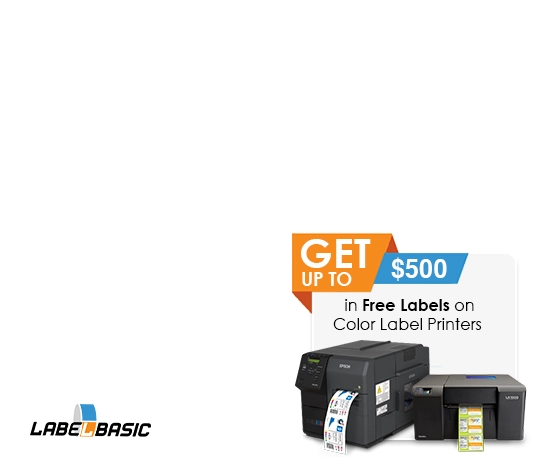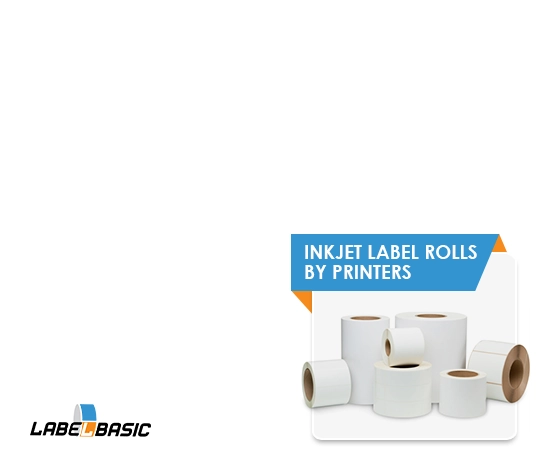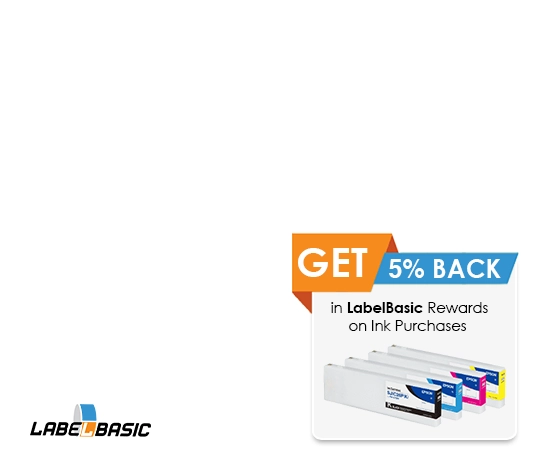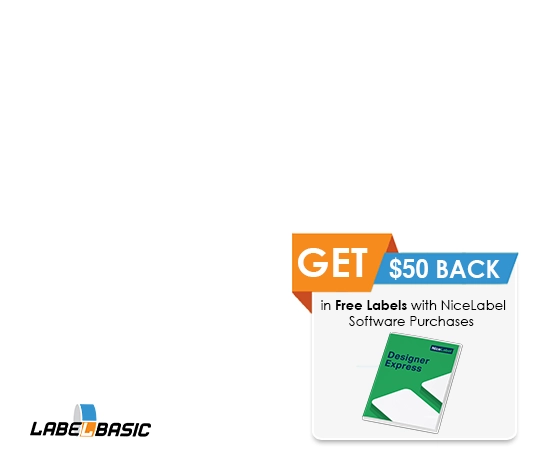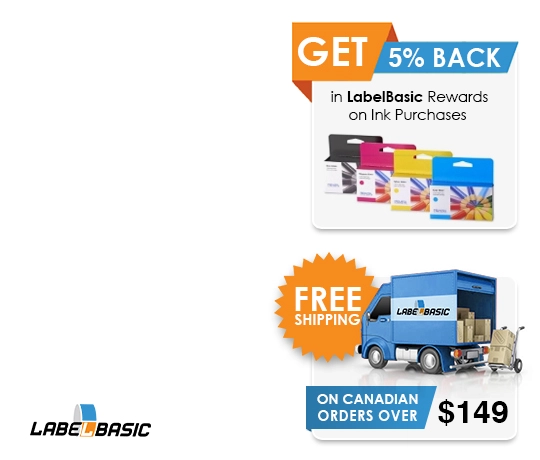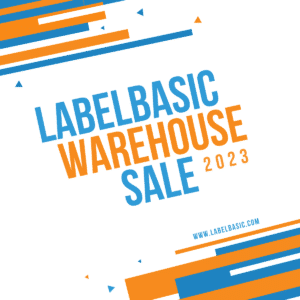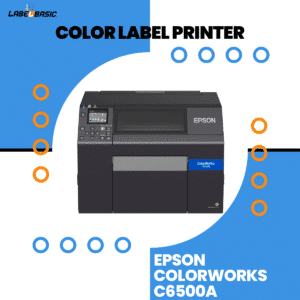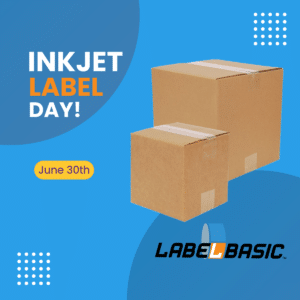- All collections
- Ink Cartridges and Toners
- Epson ColorWorks Showdown: Comparing Ink Costs Between C4000 and C6000/C6500 Series Printers
Epson ColorWorks Showdown: Comparing Ink Costs Between C4000 and C6000/C6500 Series Printers
Discover the differences in ink cost efficiency between Epson ColorWorks C4000 and C6000 Series label printers, helping businesses make informed decisions for their label printing needs.
Written by
Updated 10 months ago
In the world of color label printing, ink cost efficiency is a crucial aspect that businesses must consider when investing in a color label printer. Efficient ink usage not only reduces ongoing expenses, but it also helps companies maintain a competitive edge by lowering production costs. With numerous printer options available in the market, making an informed decision can be challenging. In this blog post, we will focus on two popular models: the Epson ColorWorks CW-C4000 and the Epson ColorWorks CW-C6000/C6500 Series printers.
The Epson ColorWorks CW-C4000 is an entry-level, compact color label printer designed for small to medium-sized businesses. It offers high-quality label printing with a focus on efficiency and ease of use. The Epson ColorWorks C6000 Series, on the other hand, is a range of advanced label printers suitable for businesses with more demanding label printing needs. These printers provide higher printing speeds, larger ink capacities, and more extensive connectivity options compared to the C4000 model.
Overview of Epson ColorWorks C4000 and C6000/C6500 Series printers
Differences in ink cartridge capacities
The Epson ColorWorks CW-C4000 printer uses standard-capacity ink cartridges, while the C6000/C6500 Series printers are designed for higher-volume printing with larger ink cartridge capacities. This results in longer intervals between cartridge replacements, reducing downtime and overall maintenance costs for businesses with more substantial printing needs.
Target audience and intended applications
The Epson ColorWorks C4000 is specifically designed for small to medium-sized businesses with moderate label printing requirements. Its user-friendly interface and compact design make it an ideal choice for businesses with limited space or those new to label printing. The printer is perfect for applications such as Product labeling, Retail labeling, and Promotional labels.
The Epson ColorWorks C4000 offers a cost-effective solution for businesses that require high-quality color labels but do not have high-volume printing needs. It provides an affordable entry point for companies looking to upgrade from black and white or pre-printed labels without sacrificing quality.
The Epson ColorWorks C6000 Series is targeted at larger businesses or those with more demanding label printing needs. Its advanced features and superior performance make it suitable for a wide range of applications, such as High-speed printing, Larger label runs, Extensive media handling.
The Epson ColorWorks C6000 Series offers a versatile, scalable solution for businesses that require advanced features and the ability to adapt to changing label printing requirements. Its robust performance, high-quality output, and extensive customization options make it a reliable choice for companies with more complex labeling needs.
Understanding ink coverage levels
Ink coverage is a crucial factor when it comes to evaluating the cost efficiency of label printers, as it directly impacts the amount of ink used during the printing process. Generally, labels can be classified into three categories based on their ink coverage levels: low, medium, and full ink coverage.
Low ink coverage labels
These labels typically feature minimal design elements and use a limited color palette. Low ink coverage labels often include simple text, small logos, or basic graphics with large white or unprinted areas. Examples of low ink coverage labels include:
- Simple barcode labels
- Minimalist product labels with only text and a small logo
Medium ink coverage labels
Labels with medium ink coverage contain more elaborate designs and a wider range of colors compared to low ink coverage labels. They often include more detailed graphics, multiple colors, and larger printed areas. Examples of medium ink coverage labels include:
- Product labels with a moderate amount of artwork and text
- Event tickets with logos, graphics, and text information
- Nutritional labels with color-coded sections and detailed information
Full ink coverage labels
Full ink coverage labels are characterized by extensive artwork, complex designs, and the use of multiple colors throughout the label. They often cover the entire label surface, leaving minimal or no unprinted areas. Examples of full ink coverage labels include:
- High-quality promotional labels with intricate designs
- Product packaging labels with full-color photographs or detailed illustrations
- Beverage or Wine Labels with elaborate artwork and branding
Results of ink cost comparison
In this section, we present the results of the ink cost comparison for the Epson ColorWorks C4000 and C6000/C6500 Series printers. A table is provided to help visualize the ink cost per label for each printer model and coverage level. We will also analyze the findings to identify the most cost-effective printer model for each coverage level and discuss any trends or patterns observed in the results.
Ink Cost Comparison Table (4″x4″ Labels)
| Printer Model | Full Coverage | Medium Coverage | Low Coverage |
| Epson C4000 | $0.044 | $0.028 | $0.015 |
| Epson C6000/C6500 | $0.040 | $0.024 | $0.014 |
Analysis of Findings
Low Coverage Labels
For low coverage labels, the Epson C6000/C6500 Series printers are slightly more cost-effective, with an ink cost per label of $0.014, compared to $0.015 for the Epson C4000.
Medium Coverage Labels
The Epson C6000/C6500 Series printers also prove to be more cost-efficient for medium coverage labels, with an ink cost per label of $0.024, compared to $0.028 for the Epson C4000.
Full Coverage Labels
For full coverage labels, the Epson C6000/C6500 Series printers maintain their cost advantage, with an ink cost per label of $0.040, compared to $0.044 for the Epson C4000.
The results show a consistent trend where the Epson C6000/C6500 Series printers offer a lower ink cost per label across all coverage levels compared to the Epson C4000. This trend can be attributed to the larger ink cartridge capacities of the C6000/C6500 Series printers, which enable more efficient ink usage and longer intervals between cartridge replacements.
However, it’s important to note that the difference in ink cost per label between the two printer models is relatively small. When considering the total cost of ownership, businesses should take into account other factors, such as hardware cost, maintenance expenses, and compatibility with their specific printing needs. These factors may offset the slight advantage in ink cost efficiency offered by the C6000/C6500 Series printers, making the C4000 a more suitable option for some businesses.
Summary
Ink cost efficiency plays a vital role in the world of label printing, as it directly impacts a business’s ongoing expenses and overall competitiveness. Choosing the right printer, such as the Epson ColorWorks C4000 or the Epson ColorWorks C6000 Series, can be a challenging task for businesses. The C4000 model is suitable for small to medium-sized businesses with moderate printing needs, while the C6000 Series caters to larger businesses with more demanding requirements.
An ink cost comparison shows that the Epson C6000/C6500 Series printers offer a lower ink cost per label across all coverage levels compared to the Epson C4000. This can be attributed to the larger ink cartridge capacities of the C6000/C6500 Series printers, enabling more efficient ink usage and longer intervals between cartridge replacements.
However, the difference in ink cost per label is relatively small. When considering the total cost of ownership, businesses should also consider factors such as hardware cost, maintenance expenses, and compatibility with their specific printing needs. These factors may offset the slight advantage in ink cost efficiency offered by the C6000/C6500 Series printers, making the C4000 a more suitable option for some businesses.
In summary, it is essential for businesses to carefully assess their printing needs and ink cost efficiency requirements when choosing a label printer. By understanding the capabilities of each printer model and the factors affecting ink coverage levels, businesses can make an informed decision that best suits their label printing needs and budget constraints.
